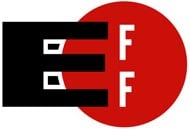
As widespread site-blocking attempts to tackle ‘pirate’ sites in the background, greater attention has turned to legal platforms that host both licensed and unlicensed content.
Under current legislation, these sites and services can do business relatively comfortably due to the so-called safe harbor provisions of the US Digital Millennium Copyright Act (DMCA) and the European Union Copyright Directive (EUCD).
Both sets of legislation ensure that Internet platforms can avoid being held liable for the actions of others provided they themselves address infringement when they are made aware of specific problems. If a video hosting site has a copy of an unlicensed movie uploaded by a user, for example, it must be removed within a reasonable timeframe upon request from the copyright holder.
However, in both the US and EU there is mounting pressure to make it more difficult for online services to achieve ‘safe harbor’ protections.
Entertainment industry groups believe that platforms use the law to turn a blind eye to infringing content uploaded by users, content that is often monetized before being taken down. With this in mind, copyright holders on both sides of the Atlantic are pressing for more proactive regimes, ones that will see Internet platforms install filtering mechanisms to spot and discard infringing content before it can reach the public.
While such a system would be welcomed by rightsholders, Internet companies are fearful of a future in which they could be held more liable for the infringements of others. They’re supported by the EFF, who yesterday presented a petition to the US Copyright Office urging caution over potential changes to the DMCA.
“As Internet users, website owners, and online entrepreneurs, we urge you to preserve and strengthen the Digital Millennium Copyright Act safe harbors for Internet service providers,” the EFF writes.
“The DMCA safe harbors are key to keeping the Internet open to all. They allow anyone to launch a website, app, or other service without fear of crippling liability for copyright infringement by users.”
It is clear that pressure to introduce mandatory filtering is a concern to the EFF. Filters are blunt instruments that cannot fathom the intricacies of fair use and are liable to stifle free speech and stymie innovation, they argue.
“Major media and entertainment companies and their surrogates want Congress to replace today’s DMCA with a new law that would require websites and Internet services to use automated filtering to enforce copyrights.
“Systems like these, no matter how sophisticated, cannot accurately determine the copyright status of a work, nor whether a use is licensed, a fair use, or otherwise non-infringing. Simply put, automated filters censor lawful and important speech,” the EFF warns.
While its introduction was voluntary and doesn’t affect the company’s safe harbor protections, YouTube already has its own content filtering system in place.
ContentID is able to detect the nature of some content uploaded by users and give copyright holders a chance to remove or monetize it. The company says that the majority of copyright disputes are now handled by ContentID but the system is not perfect and mistakes are regularly flagged by users and mentioned in the media.
However, ContentID was also very expensive to implement so expecting smaller companies to deploy something similar on much more limited budgets could be a burden too far, the EFF warns.
“What’s more, even deeply flawed filters are prohibitively expensive for all but the largest Internet services. Requiring all websites to implement filtering would reinforce the market power wielded by today’s large Internet services and allow them to stifle competition. We urge you to preserve effective, usable DMCA safe harbors, and encourage Congress to do the same,” the EFF notes.
The same arguments, for and against, are currently raging in Europe where the EU Commission proposed mandatory upload filtering in 2016. Since then, opposition to the proposals has been fierce, with warnings of potential human rights breaches and conflicts with existing copyright law.
Back in the US, there are additional requirements for a provider to qualify for safe harbor, including having a named designated agent tasked with receiving copyright infringement notifications. This person’s name must be listed on a platform’s website and submitted to the US Copyright Office, which maintains a centralized online directory of designated agents’ contact information.
Under new rules, agents must be re-registered with the Copyright Office every three years, despite that not being a requirement under the DMCA. The EFF is concerned that by simply failing to re-register an agent, an otherwise responsible website could lose its safe harbor protections, even if the agent’s details have remained the same.
“We’re concerned that the new requirement will particularly disadvantage small and nonprofit websites. We ask you to reconsider this rule,” the EFF concludes.
The EFF’s letter to the Copyright Office can be found here.
Source: TF, for the latest info on copyright, file-sharing, torrent sites and more. We also have VPN discounts, offers and coupons


 More than six years ago in January 2012, file-hosting site Megaupload was shut down by the United States government and founder Kim Dotcom and his associates were arrested in New Zealand.
More than six years ago in January 2012, file-hosting site Megaupload was shut down by the United States government and founder Kim Dotcom and his associates were arrested in New Zealand. Since the turn of the last decade, numerous people have been sued for illegal file-sharing in US courts.
Since the turn of the last decade, numerous people have been sued for illegal file-sharing in US courts. 

 Regarding Android we just continued to do what we started some years ago and that was stripping all custom written code and simply following the official Android standards. When XBMC back then became available for Android a lot of specific code was written to get it running on those low powered devices and we had more capabilities than any other application back then. Over time stock Android improved a lot and basically all what we had custom made was becoming readily available to be used. At that point we started dropping old stuff and just applied the standards which reduced support burden for the developers. Now all that was done we could start looking at new features and from that we gained the
Regarding Android we just continued to do what we started some years ago and that was stripping all custom written code and simply following the official Android standards. When XBMC back then became available for Android a lot of specific code was written to get it running on those low powered devices and we had more capabilities than any other application back then. Over time stock Android improved a lot and basically all what we had custom made was becoming readily available to be used. At that point we started dropping old stuff and just applied the standards which reduced support burden for the developers. Now all that was done we could start looking at new features and from that we gained the 


 Last week the Fourth Circuit Court of Appeals ruled that ISPs are required to
Last week the Fourth Circuit Court of Appeals ruled that ISPs are required to  In August 2015, police in Denmark
In August 2015, police in Denmark 
 Regular Internet providers are being put under increasing pressure for not doing enough to curb copyright infringement.
Regular Internet providers are being put under increasing pressure for not doing enough to curb copyright infringement.